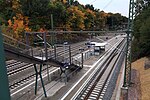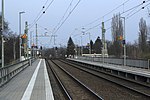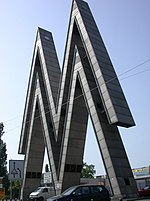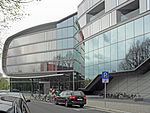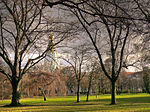Leipzig-Stötteritz railway station
Railway stations in Germany opened in 1893Railway stations in Leipzig
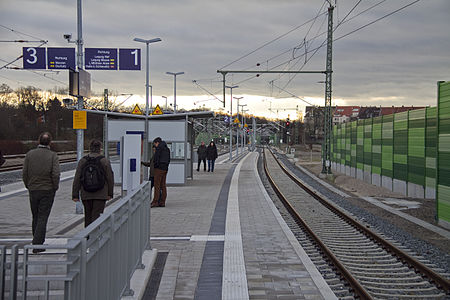
Leipzig-Stötteritz is a railway station in the city of Leipzig, Germany. The station opened on 1 December 1891 and is located on the Leipzig Hbf–Leipzig-Connewitz and Leipzig-Engelsdorf–Leipzig-Connewitz railways. Since December 2013 the station is served by the S-Bahn Mitteldeutschland, with train services operated by DB Regio. The station was rebuilt and modernised from October 2011, in preparation for the S-Bahn Mitteldeutschland. This included the building of lifts, to make the station accessible to all.
Excerpt from the Wikipedia article Leipzig-Stötteritz railway station (License: CC BY-SA 3.0, Authors, Images).Leipzig-Stötteritz railway station
Papiermühlstraße, Leipzig Reudnitz-Thonberg (Südost)
Geographical coordinates (GPS) Address Nearby Places Show on map
Geographical coordinates (GPS)
| Latitude | Longitude |
|---|---|
| N 51.324386 ° | E 12.411511 ° |
Address
Leipzig-Stötteritz
Papiermühlstraße
04317 Leipzig, Reudnitz-Thonberg (Südost)
Saxony, Germany
Open on Google Maps
